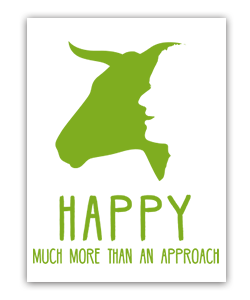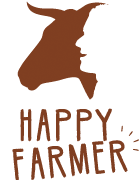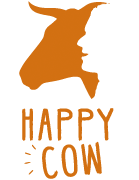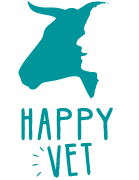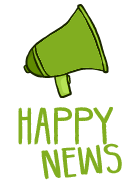“The Happiness of the cows and serenity of the breeders”
In Saône-et-Loire, the partners of Gaec de la Gravaise must manage a dairy farm of 95 Montbéliardes, exploit 425 ha of UAA ( useful agricultural area) and lead a suckler herd of 105 Charolais and Limousines. To this is added breeding of 110 goats. To anticipate the difficulties, the four breeders rely on the comfort of their animals. A winning bet.
For three years now, the bovine livestock of Gaec de la Gravaise has been suffering from Q fever. The latest blood tests have confirmed the presence of zoonotic virus, borne by a bacterium. Despite this disavantageous handicap, the herd is doing well with an average exceeding 8 500 liters, without any real health problems. “The levels of non-deliveries, metritis and abortions are controlled, without resorting to antibiotics,” says the veterinary practitioner of livestock. Should we observe a sign of the general good health of the herd with a strong immunity? Undoubtedly. Fabien Coulon, the partner responsible for cattle and goats, remains convinced of the need to anticipate pathologies. Accompanied by his veterinarian, he set up protocols to avoid any unpleasant surprises. Fabien look forward to share his experience on the happiness of animals with the members of the association, and is the president of GDS (health defense group) in Saône-et-Loire.
“The basis of breeding is undoubtedly in the preparation for calving and then the good start of the calves,” says Fabien. For the dairy herd, the Montbéliardes are split into two batches, that of drying and that of preparation for calving. At drying, the breeder routinely performs a cows trimming, treats them against internal or external parasites and provides them a bolus. The level of infection of each teat is checked with CMT (Californian mastitis test) and only those infected are treated with antibiotics.
Breeder-Veterinary Partnership
Three weeks before calving, dairy farmers receive a third of the dairy cow ration with a compelementary feedingstuff rich in vitamin E. “Everything is recorded on computers but also on a flipchart on which we can visualize, at a glance, the operations performed and those not to be forgotten. This table with two inputs is simple: to each cow it associates a protocol of care and complete vaccination. This tool fully reflects the partnership between the breeder and the veterinarian. Fabien has perfectly assimilated the recommendations of his veterinarian, he appropriated them and equipped himself with his own monitoring tools. The veterinarian could take offense of the independence taken by Fabien, but not at all! He sees it as a necessary development and he is willing to accompany this autonomy by providing ever more detailed guidance. This rigorous preparation has led to the disappearance of pathologies linked to farrowing, and in particular milk fevers. Breeding is now controlled with a first insemination at 60 days of lactation, a 400-day IVV ( calving-calving interval). On suckler cows, the preparation is less rigorous but the cows benefit from silage in their ration, Exit the traditional food approach based on hay at will ” of which quality remains random from year-to- year, sometimes with an imbalance in nitrogen and, in some years, in energy”. Every two years, the farmer performs metabolic profiles on five cows in the herd, the results allow to refine the mineral and concentrate intakes.
Well-cared calves
Breeders pay particular attention to calf improved care. “Calves are probed if they do not take their 4 liters of colostrum, the immunoglobulins of class IgG content of which is cheked. They then join individual boxes on elevetad gratings to keep the litter dry. In addition to the milk food (a simple milk powder), they have access to an early feed and water at will. Then, they are bred in collective box with a second age food and hay at will. At nine months, the heifers weigh between 250 and 300 kg. “We invested €12,000 for a dynamic ventilation installation in our nursery. This amount proves to be modest compared to the return on investment obtained. Thus, the breeders have gained three months in the breeding of heifers: they inseminate from 420 kg, knowing that this weight was obtained three months rather. In addition, diarrhea penalized growth. “Today, it’s done and dusted and three quarters of our heifers achieve the GMQ goals. “The veterinarian is no longer moving to cure the calves, and the delivery of antibiotics is showing a loss of use. “be acreful,” warns the breeder, “the implementation of this type of protocols takes time. Switching from traditional breeding to animal behavior based on prevention with the delivery of antibiotics and other preventive products takes time. For one to two years, we had to accept expenditures for both preventive and curative medicines. Today, our expenses are limited to preventive care. “The veterinarian of the breeding confirms:” For us veterinarians, the challenge is also important. Our work evolves and we are no longer the breeding’s firefighters. From an accounting point of view, the aim of this approach is to see that our intervetions include “livestock costs” to the detriment of that veterinary expenses, “summarizes the veterinarian. Fabien, he would not backtrack. The HAPPY approach meets the expectations of the breeder who wishes to share with his animals something other than stress linked to illnesses, loss of time and profitability. “We will go even further with this approach and will soon be communicating about the products from our breeding to point out that they come from happy cows. Happiness is a value that we must put forward and share with our customers to reassure them about the products origin, “concludes Fabien.
The basis of breeding is undoubtedly in the preparation for calving and then the good starting of the calves.
